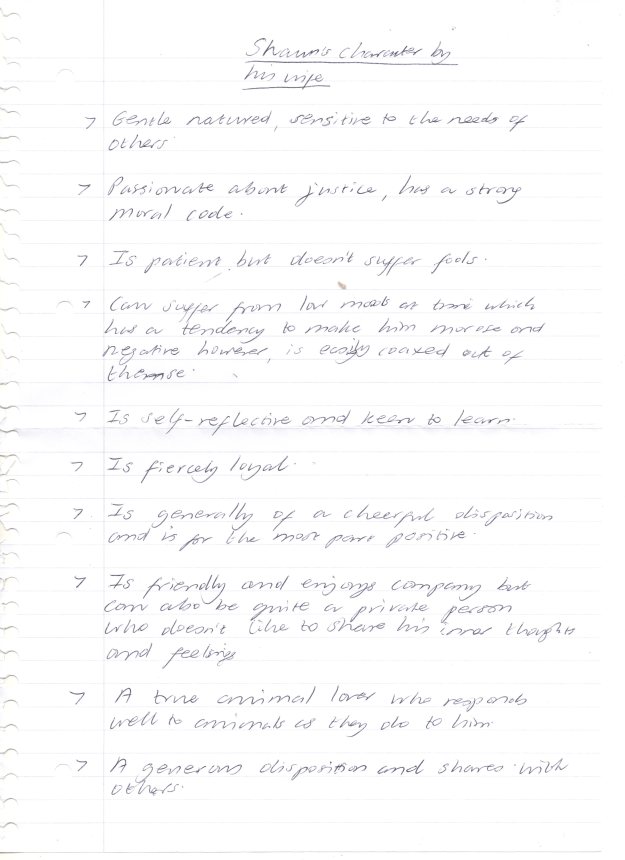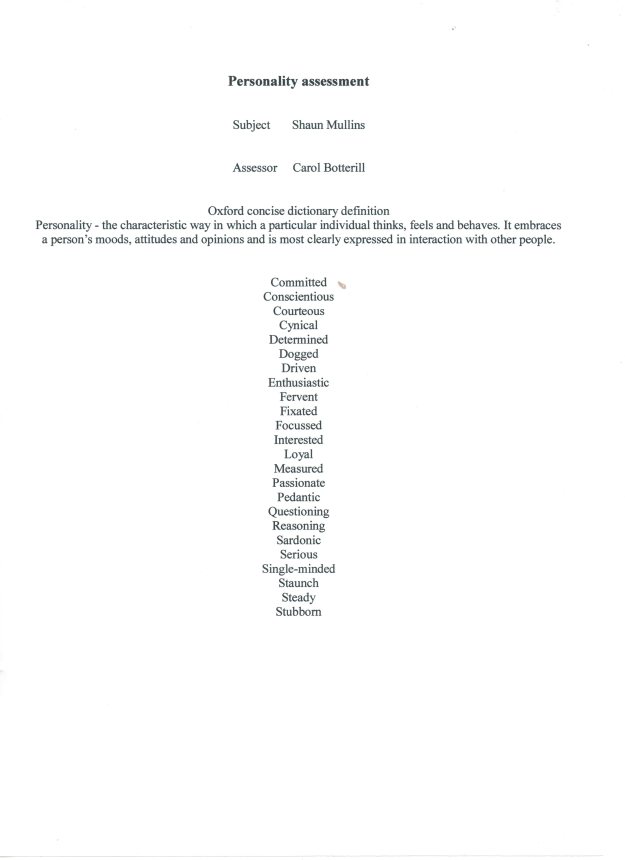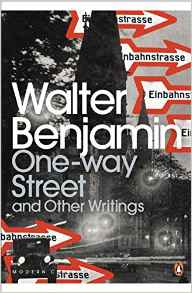I have reprinted all my photos using the adopted lilac Hue style suggested by my Tutor as I like the result and further to his comments, I also re-took the photo of image 5 standing on the soap-box for a better composition and made some Photoshop improvements to some of the other images for example image 3 (please refer to my earlier blogs) . Included in the folder is my Tutor’s report, Shaun Mullins – 512659 – Photography 1 Context & Narrative – Assignment 3 (1) My 300 word introduction labeled 1 of 16 300-word-introduction The character descriptions from my friends and family and a printout of the associated anchoring text marked 6 of 16 a-self-portrait-as-regarded-by-others



Tag Archives: adopted
One-Way Street & Other Writings by Walter Benjamin

Walter Benjamin, One-way Street and other Writings, (2009) London: Penguin. ISBN:978-0-141-18947-5.
On the critique of violence, (1921) is an essay considering the use of violence as a form of law enforcement and justice. An interesting essay for studying documentary theory.
There is an essay on surrealism and an essay about a Czech writer that I had not heard of but who sounds interesting Franz Kafka. I shall look for examples of his work.
A collection of essays that include Brief History of Photography, (1931) that looks at the early development of photography and such influencing works as August Sanders.
Also included is The Work of Art in the Age of Mechanical Reproduction, (1936) Benjamin examines how photography has made the great art classics more available to be seen by the mass public but by doing so he considers that there value has diminished in virtue of the rarity for public access. He then goes on to look at cinema as a new art form and how this form of media is changing and influencing art both politically and culturally.
Notes of interest for, The Work of Art in the Age of Mechanical Reproduction (1936)
- Benjamin argues that recent technology has fundamentally changed the meaning of reproduction in art.
- He argues that art has always been reproducible by limited technological means since the times of Ancient Greece by means of casting and embossing for bronzes, terracottas and coins. Then much later came printing.
- Until the development of photography and gramophone the reproduction of most art forms could retain their genuineness through provenance.
- However photography and the gramophone has fundamentally changed the meaning of reproduction of art as a whole.
- A piece of art holds its status of genuineness through provenance and provenance is beyond technological reproduction.
- Something reproduced by manual means still holds its genuineness (even when branded a forgery).
- Something reproduced by modern technological means does not. For example a Brahms symphony reproduced in a concert hall 150 years after Brahms’ death still retains its genuineness. However, if recorded and then played back the genuineness. A painted copy (manual reproduction) of the Mona Lisa retains a genuineness. However, a photograph (technological reproduction) of the Mona Lisa does not.
- With the new technological reproduction of photography and gramophone, the reproduced works of art has now a new meaning: one that can go anywhere and be enjoyed by anyone. A symphony concert can now be enjoyed in a living room or a priceless Rembrandt painting from the pages of a book.
- New methods of technological reproduction has also provided new ways in which to experience beyond the range of our normal senses for example slow motion and macro-photography.
- Although technological reproduction does not physically alter or effect the original, it does alter the original’s value. Its here and now is devalued.
- The genuineness of a thing is the quintessence of everything about it since its creation that can be handed down, from its material duration to the historical witness duration to the historical witness that it bears. The latter (material duration and historical witness) being grounded in the former (the thing’s genuineness), what happens in the representation, where the former has been removed from human perception, is that the latter also starts to wobble. Nothing else, admittedly; however, what starts to wobble thus is the authority of the thing. (233).
- The above passage suggests that when the genuineness has been removed the material duration and its historical witness becomes questionable.
- ‘We can encapsulate what stands out here by using the term ‘aura’. We can say: what shrinks in an age where the work of art can be reproduced by technological means is its aura.’ (233)
- Reproductive technology, we might say in general terms, removes the thing reproduced from the realm of tradition. In making many copies of the reproduction, it substitutes for its unique incidence a multiplicity of incidences. And in allowing the reproduction to come closer to whatever situation the person apprehending it is in, it actualises what is reproduced. (233)
- Art’s meaning alters over time.
- Within major historical periods, along with changes in the overall mode of being of the human collective, there are also changes in the manner of its sense perception. (234). ‘A classical statue of Venus, for example, occupied a different traditional context for the Greeks, who made of it an object of worship, than for medieval clerics, who saw it as a threatening idol.’ (236)
- ‘Works of art are received and adopted with different points of emphasis, two of which stand out as poles of each other. In one case the emphasis is on the work’s cultic value; in the other, on its display value.’ (237)
- Much wisdom had already been thrown away on deciding whether photography was an art (without asking the prior question: whether, with the invention of photography, the very nature of art had undergone a change), but before long the theoreticians of film were asking a similarly hasty question. (240)
- The fact that the work of art can now be reproduced by technological means alters the relationship of the mass to art. From being very backward (faced with a Picasso, for instance), it has become highly progressive (given, say, Chaplin). Yet this progressive response is characterised by the fact that in it the pleasure of looking and experiencing is associated, directly and profoundly with the stance of passing an expert judgement. The link is an important social indicator. In fact, the more the social significance of an art diminishes, the greater the extent (as clearly turning out to be the case with painting) to which the critical and pleasure-seeking stances of the public diverge. (248-249)









